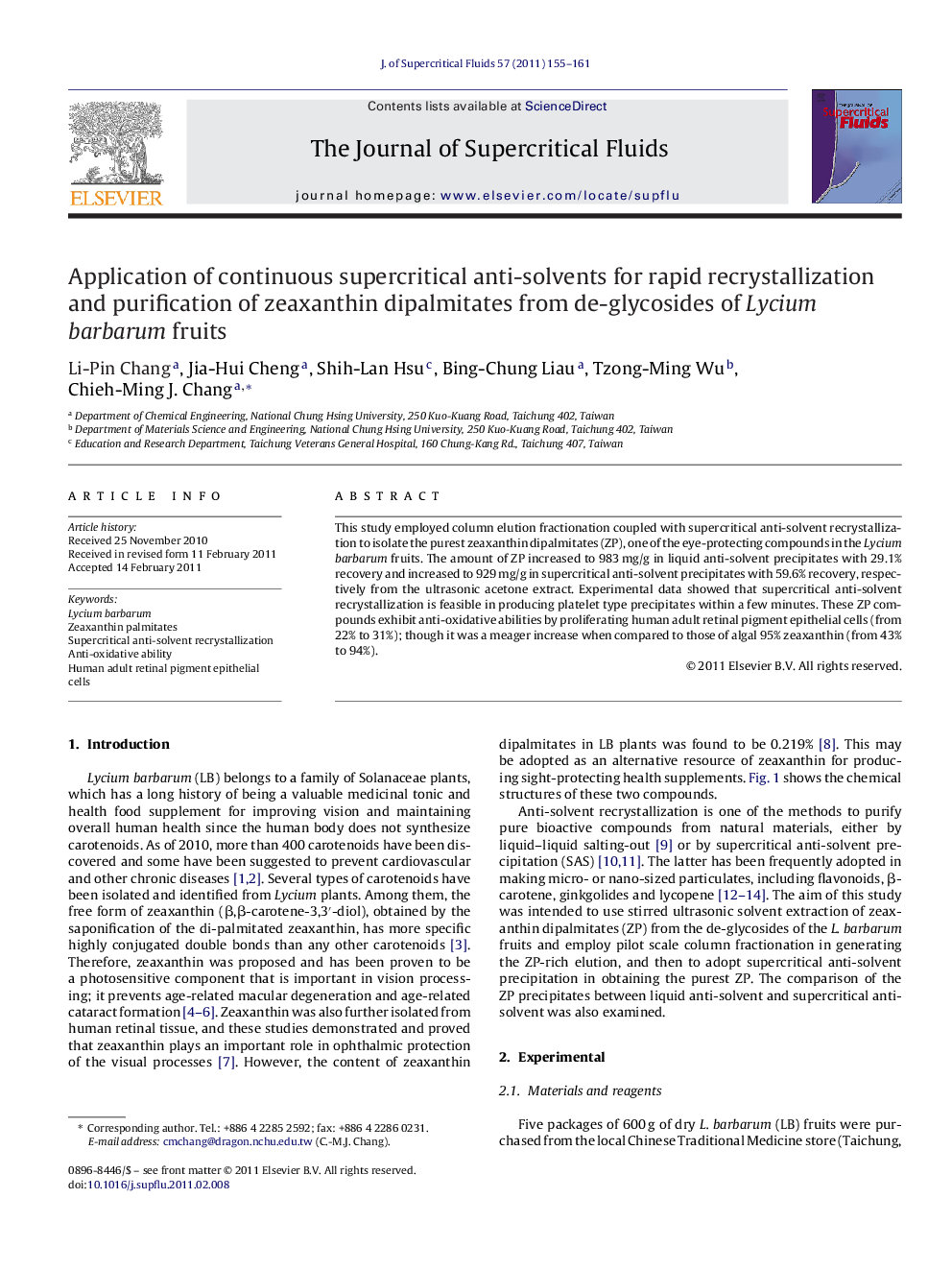| Article ID | Journal | Published Year | Pages | File Type |
|---|---|---|---|---|
| 231224 | The Journal of Supercritical Fluids | 2011 | 7 Pages |
This study employed column elution fractionation coupled with supercritical anti-solvent recrystallization to isolate the purest zeaxanthin dipalmitates (ZP), one of the eye-protecting compounds in the Lycium barbarum fruits. The amount of ZP increased to 983 mg/g in liquid anti-solvent precipitates with 29.1% recovery and increased to 929 mg/g in supercritical anti-solvent precipitates with 59.6% recovery, respectively from the ultrasonic acetone extract. Experimental data showed that supercritical anti-solvent recrystallization is feasible in producing platelet type precipitates within a few minutes. These ZP compounds exhibit anti-oxidative abilities by proliferating human adult retinal pigment epithelial cells (from 22% to 31%); though it was a meager increase when compared to those of algal 95% zeaxanthin (from 43% to 94%).
Graphical abstractFigure optionsDownload full-size imageDownload as PowerPoint slideResearch highlights► Supercritical carbon dioxide anti-solvent recrystallization was employed in rapidly producing micro-sized zeaxanthin dipalmitates (ZP) as eye-sight protecting health supplements from Lycium barbarum fruits. ► De-glycosides pre-treatment was necessary in obtaining the purest ZP compound. ► Anti-oxidation ability of ARPE-19 cells was successfully examined for these ZP compounds.
